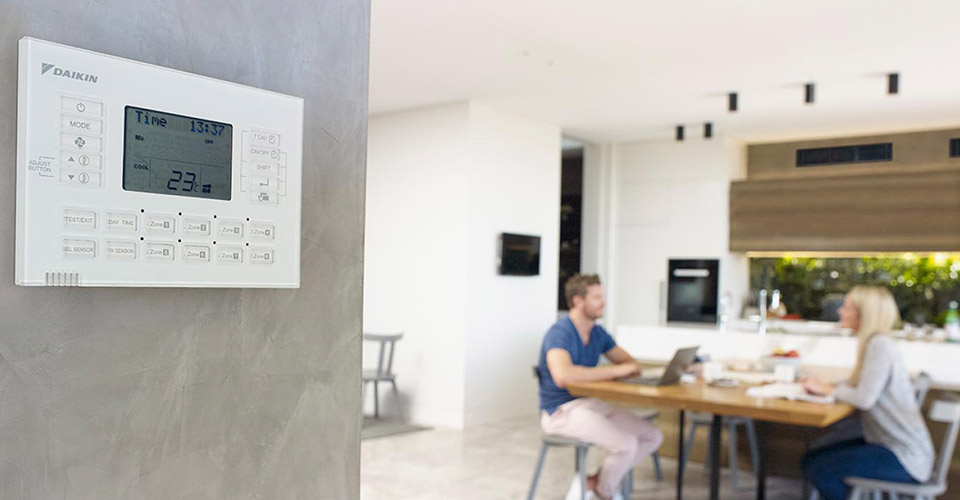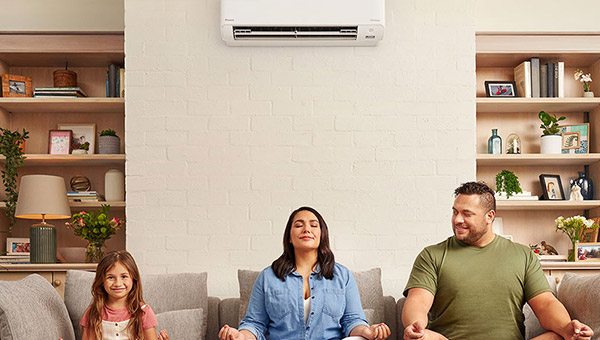How cooling and heating works
The principle behind air conditioning is simple. Two coils, one inside the home and one outside, are connected by pipes filled with refrigerant. This gas has the ability to absorb and reject heat quite readily.
The refrigerant is pumped throughout the system via the compressor, it is pumped through the inside coil and heat from the room is absorbed as the air is circulated from the room through the coil and back into the room.
The refrigerant then travels through the outdoor coil and heat is rejected outside. While this process occurs, the air in the home is continually filtered and dehumidified.
When heating is required the process is reversed, via a reversing valve. Heat is absorbed from the compressor, as well as from outside and rejected into the home. Hence the term “reverse cycle air conditioning”.
Systems available
Maintenance
Maintaining your system is a very important aspect of air conditioning. Filters play an important role in the systems operation. Their primary role is to protect the indoor coil from becoming blocked with dirt and dust, thus reducing the efficiency and ultimately the life expectancy of a system.
Generally it is advisable to clean the filters once a month, depending on system usage. Filters also have a limited life span. It is advisable to replace your filters once a year as the filter media becomes far less efficient and loses its ability to separate and retain dust and pollen particles from the air.
Another way to help increase your systems life span is to keep the outdoor coil clean. Periodic cleaning of the coil with a brush or a hose and keeping the surrounding area clear of grass, leaves and rubbish will ensure the systems performance and longevity and also help to eliminate the inconvenience and cost of unwanted service calls.
Reverse cycle air conditioning is the most energy efficient form of heating or cooling your home, however running costs are directly affected by how long the unit is running. Therefore an undersize unit while having a cheaper initial cost, will have significantly higher running costs.




